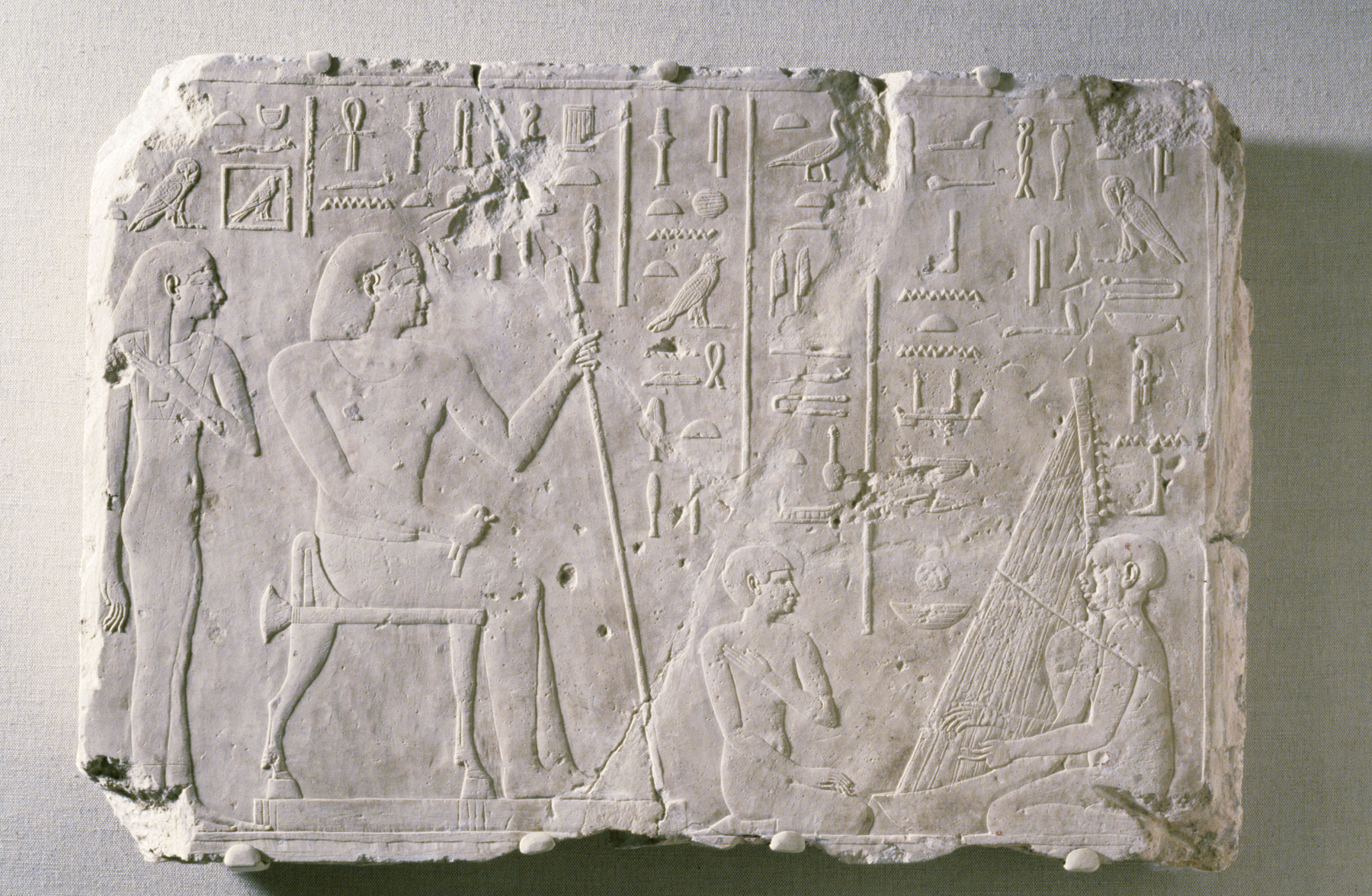Ankh-ef-en-Sekhmet Entertained by a Harpist
(Ancient Egypt and Nubia )
Late Period interest in the past is clearly demonstrated in this work, whose composition, clothing, and poses all recall Old Kingdom and Middle Kingdom works. Details such as the crisp precision of the carving and the presence of personal names date the piece to the Late Period. It shows its owners, Ankh-ef-en-Sekhmet and his wife Hathor-em-hat, to the viewer's left. Their daughter, with close-cropped hair, kneels at center. The three are entertained by a harpist named Psamtik-seneb, who "plays the harp for the good of their spirits everyday." The harpist's name means "may King Psamtik be healthy." The tomb from which this relief came was located in Saqqara, the necropolis (cemetery) of Memphis, an important center for the worship of the goddesses Sakhmet and Hathor, whose names are incorporated into the tomb owners' names.
Inscription
Provenance
Provenance (from the French provenir, 'to come from/forth') is the chronology of the ownership, custody, or location of a historical object. Learn more about provenance at the Walters.
Khawam Brothers, Cairo, prior to 1930; Dikran Kelekian, New York and Paris, by purchase; Henry Walters, Baltimore, 1931, by purchase; Walters Art Museum, 1931, by bequest.
Conservation
| Date | Description | Narrative |
|---|---|---|
| Examination | technical study | |
| 11/24/1998 | Examination | survey |
| 8/3/1999 | Treatment | cleaned, stabilized |
| 3/16/2006 | Treatment | other |
Measurements
17 5/16 x 25 9/16 in. (44 x 65 cm)
Credit Line
Acquired by Henry Walters, 1931
Location in Museum
Accession Number
In libraries, galleries, museums, and archives, an accession number is a unique identifier assigned to each object in the collection.
In libraries, galleries, museums, and archives, an accession number is a unique identifier assigned to each object in the collection.
22.38
Do you have additional information?
Related Objects



